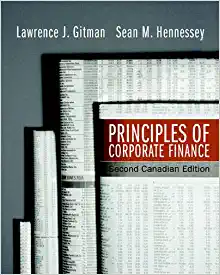3 part question. Part 1 is answered. Parts 2 and 3 are partially complete. 1.pdf is the problem that needs a solution and 2.pdf contains an example problem identical to this problem. 2.pdf is to assist in solving the problem
Your company operates a steel plant. On average, revenues from the plant are $48 million per year. All of the plants costs are variable costs and are consistently 86% of revenues, including energy costs associated with powering the plant, which represent one quarter of the plant's costs, or an average of $10.32 million per year. Suppose the plant has an asset beta of 1.03, the riskfree rate is 3%, and the market risk premium is 6%. The tax rate is 37%, and there are no other costs. 1. Estimate the value of the plant today assuming no growth. a. FCF = (48 - .86(48))(1-.37) = 4.23 million Ru = 3% + 1.03 6% = 9.18% V= 4.23/.0918 = 46.08 million 2. Suppose you enter a longterm contract which will supply all of the plant's energy needs for a fixed cost of $3 million per year (before tax). What is the value of the plant if you take this contract? FCF without energy = (48 - ?)(1 - .37) = A Cost of capital = 9.18 Energy cost after tax = 3(1 - .37) = 1.89 Cost of capital = 3% V = A/.0918 - 1.89/.03 = VALUE 3. How would taking the contract in (b) change the plant's cost of capital? c. FCF = A - 1.89 = B B / VALUE = NEW COST OF CAPITAL EXAMPLE PROBLEM COMPLETED Your company operates a steel plant. On average, revenues from the plant are $30 million per year. All of the plants costs are variable costs and are consistently 80% of revenues, including energy costs associated with powering the plant, which represent one quarter of the plant's costs, or an average of $6 million per year. Suppose the plant has an asset beta of 1.25, the riskfree rate is 4%, and the market risk premium is 5%. The tax rate is 40%, and there are no other costs. a. Estimate the value of the plant today assuming no growth. b. Suppose you enter a long-term contract which will supply all of the plant's energy needs for a fixed cost of $3 million per year (before tax). What is the value of the plant if you take this contract? c. How would taking the contract in (b) change the plant's cost of capital? Explain. a. FCF = (30 - .8(30))(1-.40) = 3.6 million Ru = 4% + 1.25 5% = 10.25% V= 3.6/.1025 = 35.12 million b. FCF without energy = (30 - 18)(1 - .40) = 7.2 Cost of capital = 10.25% Energy cost after tax = 3(1 - .40) = 1.8 Cost of capital = 4% V = 7.2/.1025 - 1.8/.04 = 70.24 - 45 = 25.24 million c. FCF = 7.2 - 1.8 = 5.4 5.4/25.24 = 21.4% Risk is increased because now energy costs are fixed. Thus a higher cost of capital is appropriate







